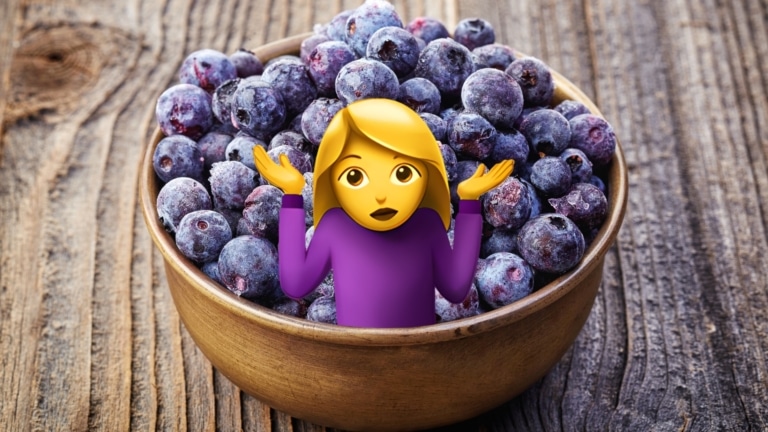Blueberry, blueberry, wild blueberry, … in German-speaking countries we use different words when we talk about the same recipe – the heavy metal detox smoothie or “HMDS” (from English for Heavy Metal Detox Smoothie). We consciously pay attention to the difference between the cultivated blueberry and the wild variety. You can also see the exact difference – the former is white on the inside and the latter is usually blue on the inside.
Without any further criteria, the wild variety is of course the better, healthier one. In Europe we predominantly find this variety, which is referred to as wild Vaccinium myrtillius. In English-speaking countries it is called Bilberry designated.
However, it is crucial to consider an important criterion for the “HMDS” and for this we need to take a closer look.
The detoxification property
For the heavy metal detox smoothie we need a berry property that corresponds to the name – it is said to remove the heavy metals from the body. It is also important that they remove metals from the whole body, especially also from the brain should be removed!
For that we need the variety Vaccinium angustifolium. In English it is called “Blueberry“ and our favorite author also means this variety when he talks about the “Wild Blueberries”. He points out even more precisely that the variety Vaccinium angustifolium, preferably from the Maine/North America and Canada region, which has the strongest metal detoxifying properties, the “ultimate,” as he says. It also has a higher antioxidant content than any other blueberry variety.
How you recognize them
The Canadian wild blueberry variety Vaccinium angustifolium gels most strongly and this quickly makes the HMDS “pudding-like”. This property is what binds heavy metals in the body. The wild blueberries (angustifolium) get the heavy metals from the organs, the liver and the brain and bind them – so they act as Binders for the metals, which can then be transported out.
The confusion
The variety Vaccinium myrtillius, which is not exclusively found in Europe, grows very differently than the variety Vaccinium angustifolium. It grows in small quantities and widely scattered, so that not enough can be harvested to meet demand and it is questionable what exactly is in a pack of wild blueberries, because only “Bilberries” is almost impossible. Nor is it the “Wild Blueberry” (angustifolium) that our favorite author talks about. Although it also has detoxifying properties, it only removes small amounts from the digestive tract.
The alternatives
“Bilberries” (Vaccinium myrtillius) as well as all wild berries such as raspberries, blackberries, etc. all have healing properties and nutrients such as antioxidants. As already mentioned, they also remove small amounts of metals from the intestines, but they cannot remove them from the brain, liver and deep within the organs.
The European wild blueberry. Bilberry is therefore not the right variety.
However, you don’t necessarily need all 5 ingredients in HMDS (spirulina, barley grass juice powder, Atlantic dulse, coriander and wild blueberry (angustifolium)) to achieve effectiveness. Without the wild blueberry it consists of 4 ingredients and without the maximum effectiveness, but what is absolutely fine. If you use blackberries, especially wild ones, these are also suitable as an alternative, even if they don’t do the same thing as the wild blueberry – the Vaccinium angustifolium.
Online source:
Wild blueberry powder from Vimergy
Source of supply offline for Germany:
- Aldi Süd – organic blueberries
- Edeka – Canadian wild blueberries, 750 g bag, frozen
- Edeka – organic blueberries (here the content differs depending on the supplier and batch, it can be either angustifolium or myrtillius be included)
- Kaufland – K Classic blueberries, frozen
- Netto – Canadian Wild Blueberries, frozen
- Norma – organic blueberries (here the content differs depending on the supplier and batch, it can be either angustifolium or myrtillius be included)
- Lidl – depending on whether the organic label says non-EU agriculture (then it is angustifolium) or EU agriculture (then it is myrtillius)
